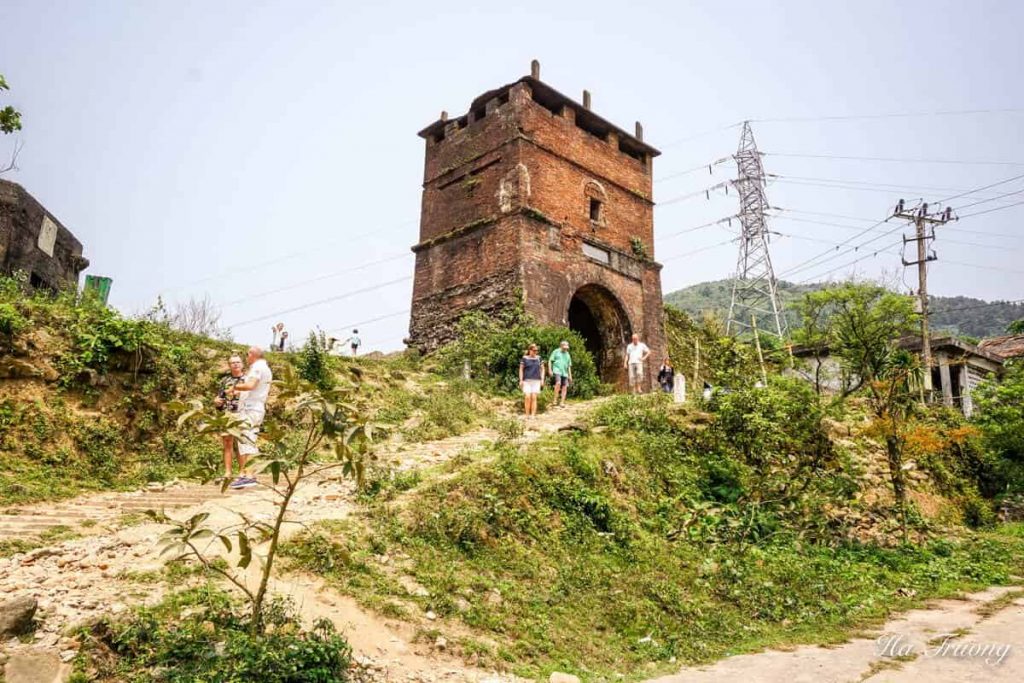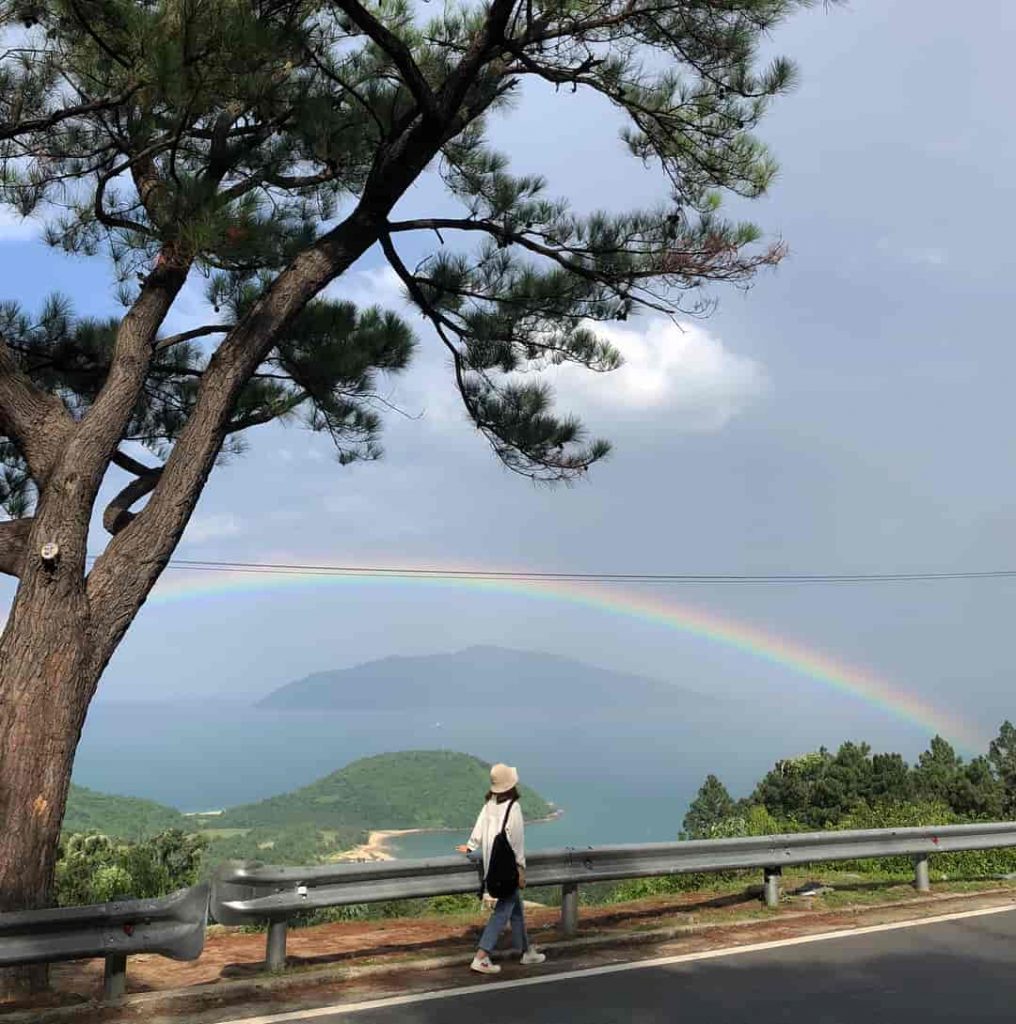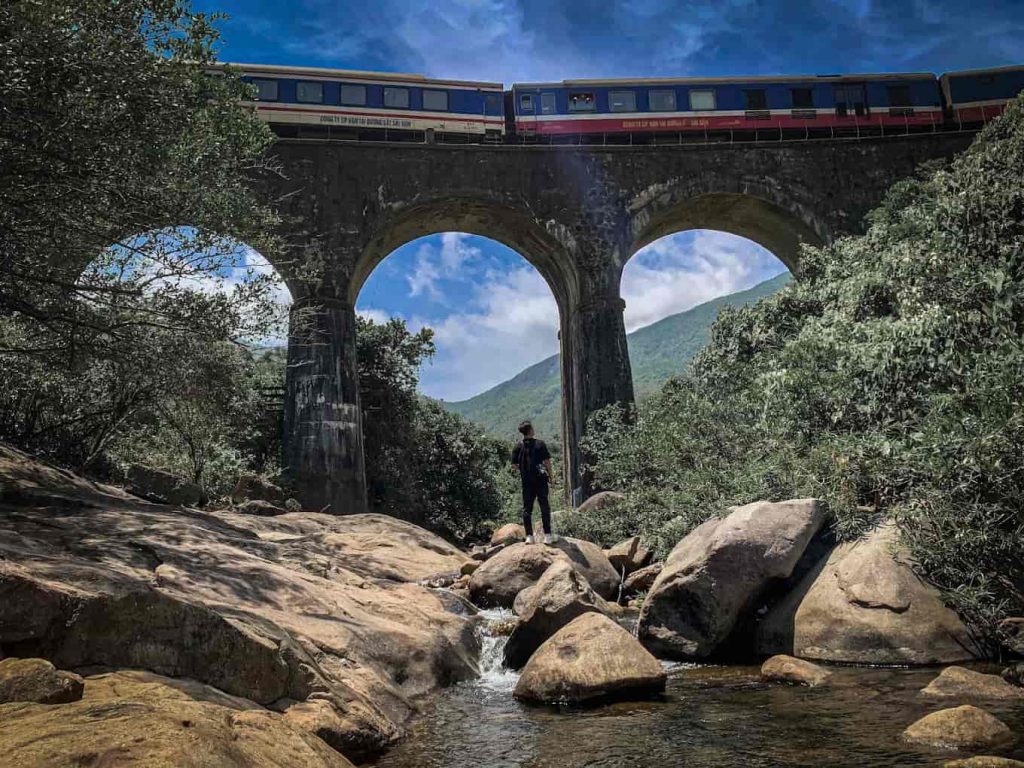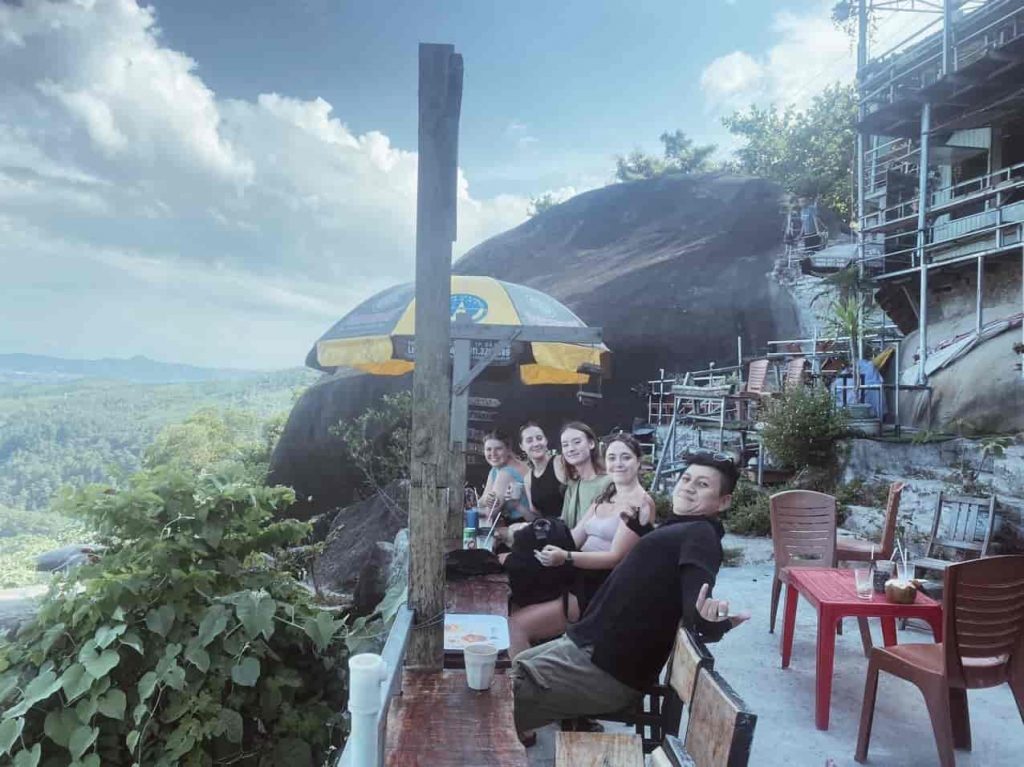Known as one of the most beautiful mountain passes in Vietnam, the Hai Van Pass in Da Nang has now become a dream destination for many adventurers. Everyone wishes to conquer this majestic pass and check-in at the Hai Van Quan summit. Despite its fame, there are still many who are uncertain about this location. Moreover, although the Hai Van Pass is enchanting, it is also among the most challenging mountain passes, comparable to the Ma Pi Leng Pass in Ha Giang and the O Quy Ho Pass in Lao Cai.
Let’s explore a bit about the Hai Van Pass with DanangPrivateCar.com, to discover what makes it so irresistible to numerous adventurers and why it’s a famous tourist spot in the Central region of Vietnam.
Table of Contents
Hai Van Pass and essential information you should know.
Where is the Hai Van Pass located, and how long is it?
The Hai Van Pass is located approximately 20km from the center of Da Nang city and about 8km from Hue city. It stretches along a branch of the Bach Ma mountain range, situated on the border between Da Nang and Hue. The pass is about 500 meters above sea level and has a length of approximately 20km. Despite not being extremely high, its significant length and strategic location have made the Hai Van Pass well-known.
Historical formation and the name “Hai Van.”
Regarding the name “Hai Van,” it might be a question for many people as to why this pass is called “Hai Van.” The name originates from the scenery here, where white clouds cover the pass all year round, while the vast sea lies beneath it. “Vân” means clouds, and “Hải” means sea, so combining the two gives “Hải Vân,” which is a quite reasonable explanation. According to other information, the pass is also known as “Ải Vân,” as there used to be a customs station at the top of the pass.
According to ancient historical records, the Hai Van Pass was once the border between the Champa Kingdom and our Dai Viet country. After the Champa Kingdom was defeated by the Hồ dynasty’s army, the king of Champa ceded territory to seek peace, making the Hai Van Pass subsequently part of Dai Ngu, the former name of our country.
Climate on the Hai Van Pass.
Despite the construction of the Hai Van Tunnel, which facilitates travel between Da Nang and Hue, the pass still acts as a climatic barrier between the two regions. When standing at the pass’s summit, one can clearly feel the weather difference between the southern and northern sides. While Da Nang may still be under warm sunlight, the area near Hue has already turned cold in the morning.
Hai Van Pass – Discover the most adventurous motorbike route in Central Vietnam.
True to its reputation, the Hai Van Pass is one of the most beautiful and impressive coastal mountain passes in the world. Here, you’ll encounter not only majestic mountain and forest scenery but also vast and mesmerizing ocean views. The road of the Hai Van Pass starts from the Liên Chiểu district, stretches for 20km across mountains, winding and embracing the ranges, and ends in Thừa Thiên Huế province.
Although the Hai Van Tunnel now exists, many still prefer taking the pass route. It’s only when you set foot on the Hai Van Pass that you truly understand why people are so eager to conquer this place. With one side featuring grand and majestic mountains and the other side overlooking the vast ocean, the pass itself weaves like a soft silk ribbon, standing out against the deep green backdrop of the mountains and forests. All these elements harmoniously create a captivating painting that enchants the soul.

Leaving a lasting impression on travelers is not just its magnificent scenery, but also the memories of the challenging pass roads. Just the thought of riding down the pass brings immense joy. Or standing at a spot on the pass, looking out at the Lang Co Bay or turning around to witness the modern and youthful Da Nang, all of these moments leave a nostalgic mark in your heart.
Must-visit locations to check in on the Hai Van Pass, Da Nang:
Lang Co Bay: Beautiful beyond words.
As soon as you descend the Hai Van Pass and enter the territory of Hue, you will encounter a poetic seascape, a mesmerizing shade of blue that is Lang Co Bay. The pure and pristine beauty of this place has attracted numerous domestic and international tourists. If you have the time, you should dedicate at least one session to explore all the attractions in Lang Ca Bay.
- Lap An Lagoon: Right behind Lang Co Bay lies a stunning lagoon, embraced by the Bach Ma Mountains, known as Lap an Lagoon. This place exudes an inexplicably tranquil atmosphere, and its picturesque landscape of mountains and water brings to mind the legendary Tuyệt Tình Cốc (the Love Valley) in Ninh Binh or Da Lat. When you embark on your motorbike journey on the Hai Van Pass and visit Lang Co Bay, be sure to capture a few photos to preserve the memories.

- Chan May Beach: Boasting a graceful name, Chan May Beach is just as romantic as its title suggests. During every summer, all tourists visiting Hue for sightseeing tend to choose Chan May Beach as their destination, including Canh Duonng Beach, Banh An Beach, and Chan May Port.
Van Village, Da Nang.
Located in Hoa Hiep Bac commune, Lien Chieu district, Da Nang, Van Village is known as a small village situated right at the foot of the Hai Van Pass. Despite its remote and somewhat isolated location from the city, Van Village in Da Nang still holds a certain charm for young travelers. Apart from enjoying the beautiful landscapes and beaches, you can also participate in fishing activities at Bãi Chính, Bãi Dừa, and Bãi Xoan, etc.

Bach Ma Mountain – A picturesque tourist destination in Hue.
With an elevation of 1444m above sea level, Bach Ma Mountain lies within the Bach Ma National Park, boasting a year-round lush green environment with diverse systems of waterfalls, streams, and forests. The road up Bach Ma Mountain is steep and winding, offering more pristine scenery as you ascend higher, providing travelers with the opportunity to admire beautiful landscapes. As per the experience of climbing Bach Ma Mountain, you can choose to hike or take a car to the top; motorcycles can only go up to a certain point, and then you’ll need to transfer Danang to Bach Ma National Park by car.

Hai Van Quan – Known as the “Number One Majestic Pass under Heaven.”
Built during the Tran dynasty and renovated during the 7th year of King Minh Mang’s reign in 1862, Hai Van Quan holds special historical significance. The gate facing Thua Thien Hue reads “Hai Van Quan,” while the one facing Quang Nam – Danang reads “the number one majestic pass under heaven“. From the time of the Nguyen dynasty, Hai Van Quan was an important gateway to the Imperial City of Hue from the South.

Although many still refer to it as the “boundary” between Hue and Da Nang, Hai Van Quan belongs to the territory of Lang Co town, Phu Loc district. Located at an elevation of 490m above sea level, this structure is actually a military compound, consisting of various warehouses, fortresses, and watchtowers. Travelers passing through the Hai Van Pass from Da Nang to Hue or vice versa often stop to explore and take photos at this historical site.

After the renovation, Hai Van Quan officially reopened in 2024, preserving its majestic beauty amid the magnificent landscape of the Hai Van Pass, attracting many visitors who come to admire it.
The Solitary Pine Tree – A hot check-in spot.
You don’t have to go all the way to Da Lat to find a solitary pine tree; right at the Hai Van Pass, there is a lonely pine tree standing tall, waiting to welcome you. If you depart from the Da Nang side, you’ll notice the pine tree on the right side of the roadside, situated between the foot and the summit of the Hai Van Pass. While it might not seem particularly special for a “solitary” tree, its branches provide a sheltering canopy, and its peculiar location at a sharp bend makes it an eye-catching sight.

Cau Vom Don and Bac Hai Van Station.
As a railway station connecting Lang Co Station (Hue) and Hai Van Station (Da Nang), Bac Hai Van Station will take you on a journey with a train track scenery reminiscent of Japan. When standing on this railway, you’ll feel as if you’re lost in some secret world, completely disconnected from the outside world. A little further along the railway, you’ll encounter the Cau Vom Don, a “super massive” bridge where you can clearly observe passing trains.

The U-turn “Death Corner.”
While conquering the Hai Van Pass, young adventurers often whisper to each other about a famous landmark, the U-turn “Death Corner.” Although challenging and somewhat perilous, it is the most frequently checked-in location. From this spot, you can easily take in the breathtaking views of the majestic mountain range and the vast sea below. Taking photos here requires some artistic skills, but remember to do so when the road is clear of traffic.

Blissful moments at the Hon Da Cu Rua Café.
After passing the lonely pine tree, you’ll notice a small coffee shop on the right side, which has become a popular photo spot in Da Nang. This place is called “Hon Da Cu Rua” because a tall rock suddenly appears behind the café. What could be more wonderful than stopping by, enjoying a cup of coffee to stay awake, and taking a photo for your check-in? Or sitting on the “turtle stone,” embracing the whole Hai Van mountain range.

Where to stay when conquering the Hai Van Pass in Da Nang?
Since the motorbike journey on the Hai Van Pass takes at most a day, it’s best to choose to stay overnight in either Hue or Da Nang and start your journey the next morning. It’s advisable not to stay too long at one place but rather explore each destination briefly, as both Da Nang and Hue offer numerous impressive landmarks. You should plan your Hai Van Pass adventure after visiting Ba Na Hills, Hoi An, or Hue.
As the distance from the center of Da Nang to the Hai Van Pass is not too far, it’s convenient to book accommodation in the city center or the My Khe beach area. If you stay near the beach, it will be easy to visit Hoi An, Linh Ung Pagoda – Son Tra Peninsula, or Marble Mountains. On the other hand, if you choose the city center, there are fewer hotels but you’ll be closer to shopping centers and dining areas such as Han Market, Con Market, etc.
Tips for a safe and budget-friendly trip conquering the Hai Van Pass in Da Nang:
When is the best time to travel the Hai Van Pass?
To enjoy the breathtaking natural landscapes on the Hai Van Pass in Da Nang, it’s best to go on sunny days or at least when there’s no rain. From March to August is the dry season in Da Nang, with plenty of sunshine and pleasant temperatures, making it an ideal time for a motorbike trip on the Hai Van Pass. The most beautiful times to admire the pass are during sunrise and sunset.
Which transportation option to choose for the Hai Van Pass trip?
Renting a motorbike for the Hai Van Pass trip to Hue
This is the most suitable option if you plan to conquer the Hai Van Pass. Choosing to go independently will give you the freedom and flexibility to stop wherever you like, without any time pressure. Alternatively, you can book a motorbike tour from Hue to Da Nang with DanangMotorbikeAdventure.com, which offers visits to villages, waterfalls, Lang Co Beach, and especially the Hai Van Pass,..

Renting a car for the Hue trip
Most public transportation will go through the tunnel, but you can opt for a Hue To Danang private car service from DanangPrivateCar.com, which allows you to visit the Hai Van Pass, Lap An Lagoon, and other spots along the way.

Detailed instructions for traveling the Hai Van Pass:
If you choose to travel independently, make sure to research the route in advance to avoid wasting time looking for directions. For those unfamiliar with the roads in Da Nang, it’s even more important to be well-prepared. Keep in mind that it takes about 2 hours to cross the Hai Van Pass.
If you’re not familiar with Da Nang’s roads, start from 29/3 Park, pass through Điện Biên Phủ Street, continue straight through Tôn Đức Thắng Street, then turn onto Nguyễn Lương Bằng Street. After passing the Nam Ô Bridge, continue on Nguyễn Văn Cừ Street, and cross the Liên Chiểu Bridge. Following that, you’ll see a sign pointing to Suối Lương Tourist Area, which is the beginning of the Hai Van Pass road.
To ensure safety, travel at a slow speed, especially around the bends. If you’re riding a motorbike, don’t release the clutch and let the bike coast, as it’s extremely dangerous. When stopping to admire the scenery and take pictures, avoid standing at bends, as it obstructs the view for oncoming traffic from Hue to Da Nang and vice versa. Stay focused while driving, especially on deep bends, to avoid accidents. It’s considered more challenging to ride from Da Nang to the Hai Van Quan peak, while the way back to Hue is more relaxed. Nonetheless, you should still pay attention to your steering.
Some notes to know when traveling the Hai Van Pass in Da Nang.
- To capture stunning photos and ensure a safe trip, you should choose to travel the Hai Van Pass in Da Nang on sunny days when the air is fresh and pleasant, perfect for sightseeing. The most beautiful moments to capture are during sunrise and sunset, but be mindful as it may take a considerable amount of time to reach these times. Additionally, if you’re not familiar with the accurate timing, it could get dark while you’re still on the pass.
- There are extremely dangerous sharp bends on the pass, known as “tử thần” (death turns), so if you’re not skilled at riding, it’s best not to attempt them. Moreover, to handle these intense bends, make sure to rent a high-quality motorbike, as there won’t be any repair shops along the way.
- To refuel during the journey, bring some snacks like biscuits, candies, or fruits to keep you energized. Otherwise, when you descend to Phu Loc District, you can find places to drink water and eat.
- As the Hai Van Quan peak can be quite cold, with temperatures dropping to 12-15 degrees Celsius, remember to bring a jacket, and in winter, opt for a thicker one. The fog may cause you to catch a cold if your health is already weak.
- Though exploring the Hai Van Pass is not too difficult, and solo travel is possible, it’s still better to find a travel companion to have more fun, confidence, and mutual support in critical situations. If you have a group of friends, even better.
Despite Da Nang having more beautiful photo spots day by day, the Hai Van Pass still holds a special place for young travelers who love adventure. If you have more time, plan and set goals to check-in at “Thiên hạ đệ nhất hùng quan” (The First Mighty Pass in the World) – Hai Van Quan!


Comments